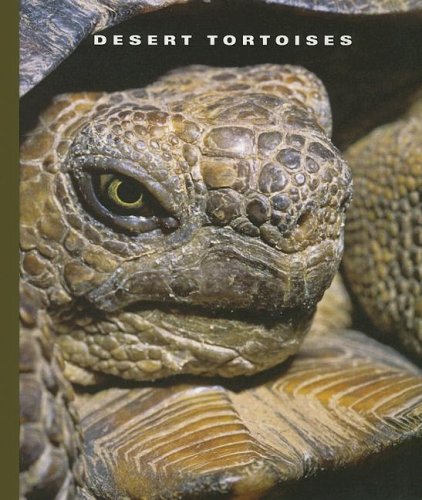-
Tortoises
Kate Riggs
Paperback (Creative Paperbacks, March 7, 2017)The popular Seedlings series offers irresistible introductions to animals, birds, sea life, insects, eco systems, and an array of transporation. Written in a friendly voice, filled with dynamic photos, and featuring text crafted for the youngest of readers, these books spotlight the bodies, behaviors, and habitats of living things and the parts, operation, and roles of vehicles. As introductions to informational text, these titles will plant the seeds of knowledge! A kindergarten-level introduction to tortoises, covering their growth process, behaviors, the habitats they call home, and such defining features as their rounded shells. Q
Q
-
Tortoises
Vanessa Black
Library Binding (Jump!, Aug. 1, 2016)In Tortoises, beginning readers will learn how tortoises fight for mates and defend themselves against predators. Vibrant, full-color photos and carefully leveled text engage young readers as they discover the exciting world of tortoises. C
C
-
Desert Tortoises
Sophie Lockwood
Library Binding (The Childs World Inc, Jan. 1, 2006)Describes the physical characteristics, habitat, and social behavior of desert tortoises, including information on their natural predators and the effect of humans on them. V
V
-
Desert Tortoises
Elizabeth Thomas
Library Binding (Capstone Press, July 1, 2011)Desert Tortoises can live where the ground is a scorching 140 degrees Fahrenheit! Learn more about this land dwelling turtle in Desert Tortoises. K
K
-
Tortoises
Chuck Miller
Hardcover (Raintree Publishers, April 25, 2003)None
-
Turtles & Tortoises
Russ Case
Paperback (CompanionHouse Books, May 15, 2007)In this Advanced Vivarium Systems book Turtles & Tortoises, beginning hobbyists of all ages will find amazing facts and useful information about turtles and tortoises from around the world. Author Russ Case, a noted author and reptile and amphibian specialist, recommends the best twelve turtles and tortoises for first-time keepers, not counting, of course, the familiar box turtle. From the smaller examples, like the mud turtle that grows only 5 inches, to the Galapagos giant tortoise, which can weigh over 700 pounds, Turtles & Tortoises opens up the whole captivating world of chelonians to the reader. This colorful guide covers the origins of these fascinating creatures as well as the health, feeding, housing, and care of these fascinating creatures. Sidebars throughout offer facts, tips, and advice. Glossary of terms. T
T
-
Desert Tortoises
Christopher Blomquist
Hardcover (Powerkids Pr, Jan. 1, 2004)Good M
M
-
Gopher Tortoises
Christopher Blomquist
Library Binding (Powerkids Pr, Jan. 1, 2004)Meet natures little bulldozer. Gopher tortoises specially designed front legs allow them to dig deep into the ground, creating homes for themselves and for dozens of other species that might not survive without them. These tortoises do immeasurable good to their habitat by sifting soil and moving minerals to the surface. They also help to spread seeds so that new plants can grow. As they read, kids will learn to appreciate this quiet, helpful creature. Q
Q



